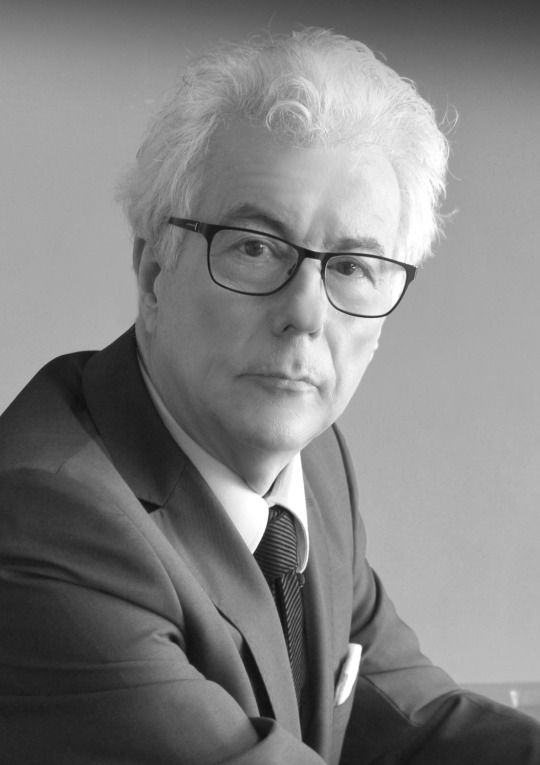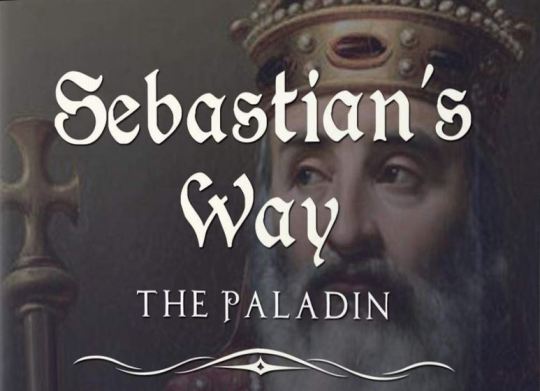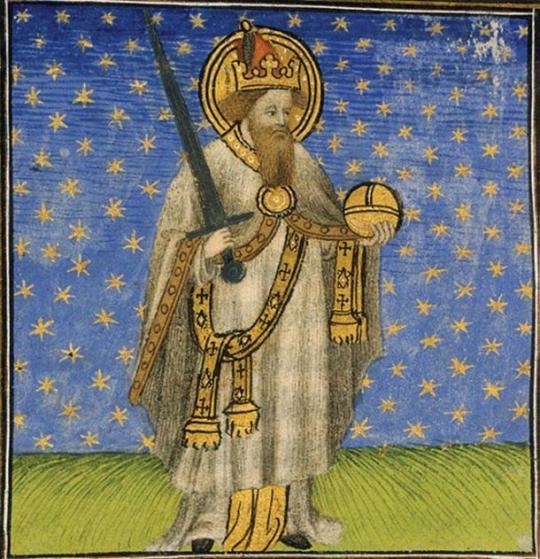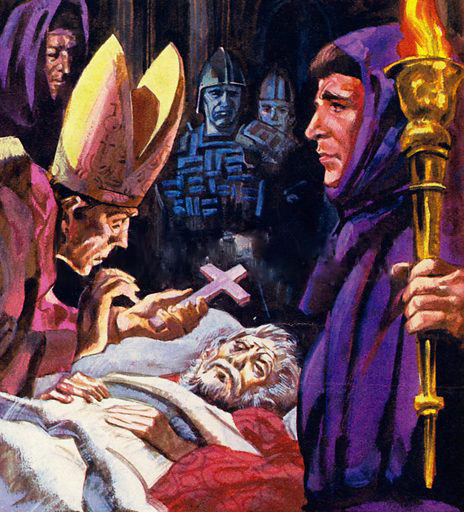Text
Religion in Novels: a Thorny Issue

In the novels of the Western world today, it seems to me that religion struggles to be of interest to readers. Increasingly, secularism looms as the predominant humour in the novels of modern writers in America as well as in Europe. It would be very difficult and probably futile to spend much time in a scholarly effort to explain this grand phenomenon. My hunch would be, however, that the explanation might be “the absence of challenge, threat, widespread need or impending disaster.” In the Army there’s a term widely used in combat: “foxhole faith.” In the face of death, the soldier quickly learns to recognize that God is in charge of everything and to pray fervently. But much of life in the Western world is complacent, not so threatening. It seems there is the perception that God is no longer needed. In the early Middle Ages, however, the era in which The Sebastian Chronicles occur, faith was at the epicenter of life. For most people, i.e, the peasants, life was “ugly, brutal and short”, as one historian put it. Cultivating the earth by the sweat of one’s brow was what most people, i.e. the peasants, were doing - with the threat of diseased harvests, floods, intemperate weather, lack of law, and greedy landlords always in the offing. Add to that the scourge of war – forced conscriptions that took the peasant away from his land, the additional taxes in kind to pay for the fighting, the loss to families when their principal breadwinner did not return. Another constant calamity was disease: dysentery, TB, arthritis, compounded by lifelong hard, physical labor, influenza, plague, born in the midst of filth, bad water, rats, fleas and head lice, to name just a few perils. Infant mortality was heavy, to say the least, female deaths in childbirth were commonplace. And war was inevitable. Fighting was simply “what a warrior does.” During the long reign of Charlemagne, there were few years when the king did not drag his warriors out to the Maifeld to go and wage war against somebody – usually the closest pagan. Clearly, the early Middle Ages were filled with dread and death at an early age. So men and women prayed. They clung to their God and their Church with desperation and with profound hope. The Christian Church was only a few centuries old. It was primitive by today’s standards. There weren’t enough priests and consequently a great deal of ignorance on the part of the people. But the Church was emerging as an enormous force. Even the lords and monarchs found it increasingly difficult to challenge. Why? Because the people of that era had great need of consolation and comfort, spiritual help and understanding. God was real and immediate. So if you are going to read novels about the Middle Ages, you are going to find a lot or religion! Unlike today, it was a major force then in the lives of the people. What I find most striking about that reality is that, as far as I can see, the peoples’ faith was genuine and it sustained them, even though its major influence came in the modest circumstances of rural life, amidst ignorance and poverty. Somehow that seems biblically appropriate. Read the full article
0 notes
Text
On Pilgrimage in an Age of Violence

Ever really ponder what life was like before the Age of Machines? For one thing, people walked! The majority of people in the 8th and 9th centuries, the Era of the great King Charlemagne, walked everywhere they went. Most couldn’t even afford a donkey to ride, let alone a horse. Horses were for the one percent, the nobility – and the warrior who worked and fought for the nobility. They cost an arm and a leg. In fact, that’s why the king, the count, or the landed nobleman gave a grant of land to good fighters, including all its fields and forests, and even its people! Some peasants in that era were freemen, but most of them were serfs or even slaves. The grant enabled a warrior to live and equip himself for war. If you read history or historical fiction, you no doubt know that the Era of Charlemagne was full of war and conquest. The king saw himself as the Protector of the Faith in his growing European kingdom, and he felt strongly that he had a duty to wipe out the scourge of paganism. So he went off every spring with his noblemen and their warriors to “do battle against the devil and his minions.” That meant a lot of killing, and of course, a lot of grim stuff that goes along with killing: rape, kidnapping, the burning of villages and towns – things that warrior do in the heat of combat. In fact, that is what they were bred for; warriors were meant to “kill people and destroy things.” Of course, warriors in that era were assured that it was OK to murder pagans because they were already possessed by the devil. So one was justified and even glorified as a good Christian if he went about knocking over pagans whenever he could. Still, we seem to forget that the Early Middle Ages were also, ironically, a time of great faith. People really believed in God. Death was a close acquaintance. The average age of peasant folk was about 40 years. Women were especially vulnerable giving birth, and the majority of babies never became children, let alone adults. So people were close to God. They prayed. They knew that only God could save them from life’s perils and bring them to a blessed afterlife. The Christian Church accrued great power because it was generally recognized as the pathway out of meager human existence into the comforting arms of the Creator. But…there was always the specter of Sin, everybody sinned, peasants as well as noblemen and warriors – especially noblemen and warriors who had so much blood on their hands. So a way had to be found to atone for all those sins. The answer was often pilgrimage. A great tradition of walking on pilgrimage grew up around the concept of atonement. Pilgrim roads stretched throughout England and Charlemagne’s Francia to the holy places of Christianity: to Rome, to Jerusalem, and to Santiago de Compostela beyond the Spanish mountains, where all believed the bones of the Apostle James lay. Such pilgrimages are depicted in both of the first two novels of the Sebastian Chronicles. Sebastian took a path to another great pilgrim destination: Tours in the western part of Francia, now a large city in France. It is the site where the bones of Saint Martin, the patron saint of the Franks, and later of France, are buried. In Book I of Sebastian’s Way: The Pathfinder, Sebastian makes the hazardous trek with his blind mentor Heimdal from his manor in Fernshanz to Tours. He is moved to make the pilgrimage because of his grief at the loss of his great love Adela. Upon reaching Tours, he nearly dies of an unknown illness, but during his slow recovery makes peace with his loss and vows to return to Fernshanz with new resolve to continue his life of service to the king. In Book II: The Paladin, Sebastian undergoes a second pilgrimage, this time coincidental to his service as an envoy for Charlemagne to Byzantium, Jerusalem and Baghdad. Again, the long journey and the constant pressure of being a paladin causes Sebastian once again to lose heart even to the point of fearing for the loss of his soul. In Jerusalem, however, he finds a pilgrim’s peace with the help of the mystic healer Magdala. Pilgrimages were so common in this tumultuous era that many men, great and small, were moved to make them, even at great risk. Many died in the effort, but their struggle to find God amid the chaos of life remains one of the most salient realities of the medieval world. Read the full article
0 notes
Text
What made Charlemagne great? Was it his What military tactics?

Essentially, since everything else he did depended on his victories. From the beginning of his reign, Charlemagne proved to be a charismatic leader. He was tall, strong, forceful in dealing with subordinates and equals alike. He looked like a king. He walked into a room and everybody looked up to him (not just because he tended to be taller than anyone else in the room.) But he was also insightful and an astute judge of men. All his life he tried to surround himself with the best men he could find, not just ‘yes’ men but men who dared to raise objections or questions about a course of action. Over a long life and a long reign, Charlemagne accomplished many things, but they all began and flourished because he was a great military leader. His strategies were relatively simple. Charlemagne believed that more was better. He believed in using overwhelming force, so he usually didn’t go into battle unless he had a big numbers advantage. That’s how he finally defeated his arch enemies the Saxons. He was not afraid to split his forces, however, and approach his enemy from multiple directions, a tactic which often caused panic in his opponent. That’s the tactics he used when he defeated the wild Avars and caused their eventual annihilation. And he was bold enough to do surprising and seemingly impossible things, like crossing the Alps in winter to invade Italy in a campaign against the Lombards. His decision making was always based on his use of intelligence. He went to great lengths to get information on his potential enemies before a campaign. Use of spies and extensive reconnaissance by scouts, in force or in disguise, was an integral part of every campaign. Much of the story of Sebastian involves his role in such missions. Charlemagne’s military genius – he rarely suffered a defeat – led to his great reputation and gave him the means and the devoted following that led eventually to great cultural and intellectual achievements as well. It’s safe to say, however, that they would not have been possible without Charlemagne’s consummate military ability. Read the full article
0 notes
Text
Were the Early Middle Ages really “The Dark Ages”?

Many people believe that the first one thousand years of the Middle Ages were a barbaric age that History might just as well skip over. “1000 Years without a bath,’ as some wag described it. Others said that in those years “Life was ugly, brutal, and short.” Nevertheless, the truth might be far from such disparaging remarks. The Early Middle Ages were also an era of slow but amazing invention, most of it created by the lowly peasant. If you don’t believe it, just cast your eyes on the following list: 1. The wheeled plow that plowed deep and turned the soil at the same time. 2. The ‘Three-field” system, by which a third less land had to lie fallow each year. 3. The harrow for breaking up the clods. 4. The toothed sickle for faster harvesting. 5. The tandem harness, which made it possible to harness together as many as eight or even twelve oxen for plowing. 6. The horse collar, which made it possible to use horses for pulling and plowing. Because horses were much faster than oxen, work could get done more quickly. 7. The water mill which produced power for grinding grain, dying clothes and s multitude of other things. 8. Stirrups 9. Tubs 10. Barrels 11. The crank 12. The wheelbarrow 13. Felt 14. Soap 15. Trousers All these amazing labor-saving tools not only paved the way for the creation of surplus instead of subsistence but they also significantly diminished the use of slaves in Northern Europe. (It helped that the Christian Church condemned the practice as well.) So make your own judgment! Read the full article
0 notes
Text
A Medieval Stew

The Sebastian’s Way novels are about many things: the Christian-pagan wars of the early Middle Ages; medieval life in the village as well as the manor; the astonishing technological and consequent social changes that occurred in the so-called Dark Ages; romance and the role of women in those early times; and the mystic medieval world view and its unique accompanying unity. The early Middle Ages were a savory stew of human life and as rich and deep as the soil of the North German Plains. The story line of the novels that runs through all these fascinating aspects of the times is about two men: one, a real-life protagonist, the great king Charlemagne, later emperor of what one day would be called “The Holy Roman Empire,” and the other a fictional protagonist, Sebastian, a simple warrior in the king’s army who learns to read and perforce to think in an unconventional way. The king strives mightily to conquer, unify and Christianize all of Europe. His method is simply to decree and enforce, most often with the point of a sword in annual bloody campaigns against any and all who would stand against him. Sebastian strives just as mightily to convince his king that he can achieve his ends in more permanent and less sanguinary ways. Although the king loves Sebastian for his pluck and originality, he is often exasperated by Sebastian’s stubborn, ethical ways. Sebastian narrowly avoids disaster in Book I, The Pathfinder, but in Book II, The Paladin, he makes some headway and gains the king’s trust. The result is the life of a paladin, one of the king’s twelve champions who will do his will without question, regardless of the difficulty or danger. Sebastian is sent to the East, to the fabled cities of Constantinople, Jerusalem, and Baghdad with consequent high adventure and narrow escapes. At this point, Book III, The Torchbearers, is underway and programmed for publication early in 2020. It will be the most difficult to write because it covers the last days of the great emperor and the consequent crumbling of his sprawling empire. It will involve the depredations of Viking and Saracen invaders, and the most adverse of all the challenges, the bitter divisions within the Carolingian royal family. Nota Bene. Lest one think the Sebastian Chronicles are purely men’s fare, there is high romance in all three books, and memorable women play key roles throughout. One cannot say, however, that the sex in the book is more than two and a half shades of grey. After all, these books are meant for the emerging young reader as well as for the lord or lady reader who has been around - been there and done that. Nevertheless, readers of any age will appreciate the love stories, which are hot and authentic without being a bit too graphic. Read the full article
0 notes
Text
Have you read any of the “Sebastian Books” yet?

There are two of them: Sebastian’s Way: The Torchbearer and Sebastian’s Way: The Paladin. A third book, Sebastian’s Way: The Torchbearer, is underway and due out by the end of the year. They all have the same title but different subtitles because they are a series, all of them aimed at drawing an authentic and colorful picture of the world of the incomparable Charlemagne, the greatest monarch of the Early Middle Ages. Charlemagne himself is one of the characters in this epic series. Sebastian is the other protagonist. He, of course, is a fictional character but drawn in the likeness of one or several of Charlemagne’s real advisors. Each book features the close collaboration and intense conflict between the two men, with Sebastian always striving to show the great ruler that there is another way to achieve his goals than the endless wars Charlemagne wages to build his empire and destroy his pagan enemies. The series chronicles the reign of the great king from its beginning to his death in 814. Though the story line is fictional, the tale includes the real and astonishing achievements of Charlemagne and an accurate and vivid portrayal of the medieval world in which he lived and ruled for 48 years. Read the full article
0 notes
Text
FOR FANS OF KEN FOLLETT

Most readers who are stuck on Historical Fiction know the name Ken Follett. He wrote one of the best novels about the Middle Ages in recent memory, Pillars of the Earth. For those readers we humbly suggest George Steger’s thrilling series called Sebastian’s Way, not because it’s as good as Pillars of the Earth – after all Follett’s work is an all-time classic - but critics say the two volumes of Sebastian’s Way are excellent reads and do present, like Follett’s work, an authentic fictional window on the medieval world. Both Book I, The Torchbearer and Book II, The Paladin represent a colorful medieval stew filled with the authentic stock of the times: savage warriors, groundbreaking clergy, salty peasants, and plenty of memorable maidens for those who like a good romance. Sebastian inhabits an early time, late 8th and early 9th centuries. It is the era of the greatest monarch of the Early Middle Ages, the incomparable Charlemagne. To be sure, the story is set amidst the seemingly incessant wars the king waged against his pagans foes as he strove to bring Christianity to all Europe. But it also sends our hero Sebastian far afield from his Rhineland home to pursue the king’s business in such exotic places as Constantinople, Jerusalem and Baghdad. Through both novels winds a tale of dramatic perplexity, of characters and of politics, even of love as a full-fledged epic of forbidden romance swelters throughout the plot in both novels. So… if Ken Follett’s medieval world is your cup of mead, have a good look at Sebastian’s Way: The Torchbearer and The Paladin. You may find some intriguing similarities. Read the full article
0 notes
Text
Women in the Middle Ages

One might say that women have come a long, long way since the early Middle Ages. In those days no girls celebrated a soccer victory by tearing off their jerseys to reveal their sports bras. In fact, women probably weren’t even allowed to play vigorous outdoor games. It just wasn’t done! But there is evidence that women did play a significant role in the life of the Middle Ages. For example, they were regularly left in charge of a manor or even a fortress while their husbands went away to war. They often were the force behind a weak prince or an addled spouse, advising their husbands in ways to gain power and improve life in a hard-bitten world. On the peasant level, they were the backbone of the family, often providing more through gardening and artisanry than their menfolk. The lives and prayers of women behind convent walls inspired the spirit of an exceptionally religious era. They wrote poems and psalms and left letters of advice to high clergy and powerful lords. But they did most of all that without much celebration or recognition. In the two published volumes of the Sebastian Chronicles: The Pathfinder and The Paladin, I have worked hard, both in the writing and the research, to portray a number of strong women whose lives reflect the roles women played more or less behind the scenes. There is Ermengard, the determined mother who relentlessly strove to educate her son in an age of illiteracy and to compel him to think outside the rigid conventions of the times. There is Adela, a beauty but also a woman with a superior intellect and iron-clad convictions. There is Adelaide, a bold and seductive adventuress who barges into a man’s world and proves an equal. There is a queen, Fastrada, who plots to be the power behind the throne of the greatest king of his age. There is a mystic healer, Magdala, whose skills change the lives of important men and lead to the elevation of primitive medicine and caregiving. So – there’s a surprising lot for the ladies in this medieval historical fiction tale. And I’m convinced it’s an accurate story behind the story. Read the full article
0 notes
Text
Innovators like Sebastian during the time of Charlemagne

Were innovators like Sebastian real during the time of Charlemagne?
Sebastian is completely fictional, though a partial model for him was Alcuin of York, one of Charlemagne’s closest advisors, who tried to get him to think in new ways and is partly responsible for the Carolingian Renaissance. Alcuin was not the only forward thinker who influenced the king. It was Charlemagne’s genius that he actively recruited men like Alcuin who could bring him new ideas. He surrounded himself with such innovators as Paul the Deacon, Theodulf and Einhard, Charlemagne’s biographer. The king was very proud of this ever-expanding “circle of wise men.” The existence of these men is no secret; there have been many scholarly works written about them. Read the full article
#adventurestory#Charlemagne'sinnovator#GeorgeSteger#historicalfiction#innovatorslikesebastian#Sebastiansway
0 notes
Text
Charlemagne

A question I often get from people who have read the Sebastian books is why I chose to put my story down in the Age of Charlemagne. As a history scholar and teacher, I’ve always been impressed by what Charlemagne accomplished during his uniquely long reign of 46 years During that time he managed to unify most of Europe and gave it an identity. He made Rome secure from its enemies and empowered the pope so that he could stand up to the emperor in Constantinople, who was his theological and doctrinal rival. He was the architect of the strongest breath of cultural reawakening since the fall of the Roman Empire and presided over a period of art, architecture, and learning that was so impressive that it has been dubbed “The Carolingian Renaissance.” Just one little example from that renewal is the Carolingian minuscule, which featured punctuation and spaces between words, a revolutionary change that made Latin the lingua franca of Europe for centuries more and advanced literacy dramatically. Finally, the unification of Europe under Charlemagne provided a model that is still pursued by the present-day European Union. It is why the annual EU award for the best contribution to unity in Europe is called The Charlemagne Prize. Our hero Sebastian is completely fictional, though a partial model for him was Alcuin of York, one of Charlemagne’s closest advisors, who tried to get him to think in new waysand is partly responsible for the Carolingian Renaissance. Alcuin was not the only forward thinker who influenced the king. It was Charlemagne’s genius that he actively recruited men like Alcuin who could bring him new ideas. He surrounded himself with such innovators as Paul the Deacon, Theodulf, and Einhard, Charlemagne’s biographer. The king was very proud of this ever-expanding “circle of wise men.” The existence of these men is no secret; there have been many scholarly works written about them. What’s next after the Sebastian Chronicles? I expect to write a prequel to be called The Horse Master, which will be the story of Attalus, the one man who was most important in Sebastian’s life. Beyond that, I have no idea. It’s already a full plate. Have you read my article about The Challenge of Book III? Read the full article
#carolingianminuscule#carolingianrenaissance#charlemagne'sbiographer#GeorgeSteger#thecharlemagneprize#ThePaladinBook#ThePathfinderBook
0 notes
Text
The Challenge of Book III

The challenge of Book III is that it will chronicle the death of Charlemagne and the consequent collapse of his empire. Even in the few years before his death, when he had become too old and too weak to lead armies or curb his willful nobles, his realm began to come apart from pressure from without and dissension from within. The Vikings in the north and the Saracens in the south became increasingly bold as the great king waned, and his nobles began to see opportunities to increase their power and wealth at the expense of their neighbors or even their brothers. The worst threat came from within the king's own family as his most reliable sons died or were killed and his remaining son. Louis the Pious, became no match for his rapacious grandsons. The challenge is how to make this last book of the series engaging or even palatable given the disintegrating world that followed the death of the great king. What I will try to do is concentrate on Charlemagne's legacy. What did he accomplish? Why was it important? How did it survive the next 150 years of chaos after his death? In this final book of the series, I would hope to present Sebastian and his sons as caretakers/guardians of his legacy, e.g. the idea of unity and law bringing order, the preservation of the cathedral and monastery schools, the concept of literacy for all, the notion of a common European culture, etc. Have you read my article about The Torchbearers: The Road to Aachen (January 814)? Read the full article
#AuthorGeorgeSteger#ChallengeofBook3#Charlemagne#Charlemagne'sdeath#Charlemagne'sstory#ContinuingtheBook#GeorgeSteger#Sebastiansway#Sebastianswaybookseries
0 notes
Text
BOOK III THE TORCHBEARERS: The Road to Aachen (January 814)

What happens when a great man dies? Does the world change at once? Sebastian pondered the question as he leaned into the slanting snow and stood up in his stirrups from time to time to ease his aching back. Or does the world change like a great glacier, slowly, inexorably but with such fearsome might? The black January night shivered with such bitter cold that ice formed on Sebastian’s beard and the muzzle of his warhorse. Overhanging branches, burdened by heavy snow, slapped against horse and rider. Every creek and ford seemed to deny its shallows and threaten to suck them into icy depths. The grim night mimicked the catastrophe at Aachen. But the great stallion knew the way so well there was no need for Sebastian to guide him. He had been with Sebastian so long that he pounded through the silence and the gloom as if he were his master’s spirit driven by an ominous wind; as if he knew his master’s mind and shared his imperative. The king was dying. Charlemagne! The paragon of kings, the rugged monarch who ruled from the great ocean to the steppes of the Rus. He was indeed an emperor, but he hated the trappings of empire and preferred the title of king. For he was, first, foremost and always, King of the Franks. His people completely identified with him. He had ruled so long that hardly anyone could remember when his scepter did not command and regulate and inspire everyone, noble and peasant alike. While he was alive he strove to surround himself with the wisest men he could find, yet most of those who served him believed there was no need for thinking. Charlemagne thought for everyone. So what now? That was the first monster question. But there was another, even more intimidating: In the end, what was it all for? Without my clothes, the scars of my old wounds frighten even me. My bones, battered by the long marches over the years, protest at night. If I sleep, my dreams are filled with mayhem and slaughter. I am sickened by war. So many of my sword brothers are dead now, or they lie helpless in their beds, crippled by wounds or strokes. Yet, who could ever refuse him? Who could say him nay? I tried. From the beginning. I reasoned with him, risked everything to show him a better way than war. I cajoled, begged, and even left his service for a while. But I always came back when he summoned me. I don’t know why. I still don’t know what it was all for—this endless fighting, this struggle to subdue and rule over others, this hatred we created to make us crazed with lust for their blood because their faith, their way of life, even their color and speech were not ours. Sebastian was beyond fear of the road. Wrapped in an old army cloak, he did not even feel the cold. What filled his mind and burdened his heart was what would come next? Read my article about The Middle Ages by clicking the highlighted text. Charlemagne. (2019). Featured image retrieved fromhttps://en.wikiquote.org/wiki/Charlemagne. Read the full article
#Charlemagne#GeorgeSteger#HistoricalBooks#Historicalreads#Sebastiansway#Sebastianswaybookseries#WesternHistory
1 note
·
View note